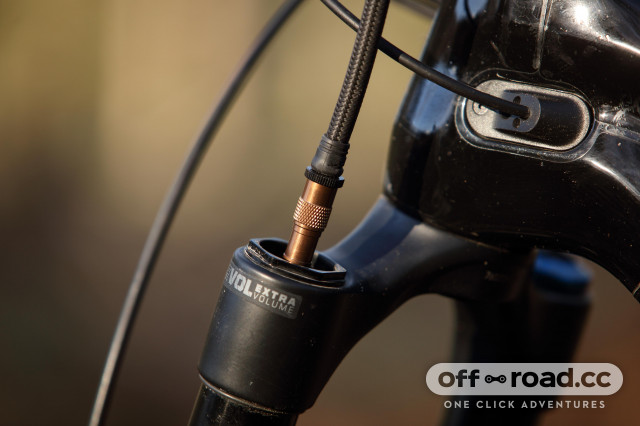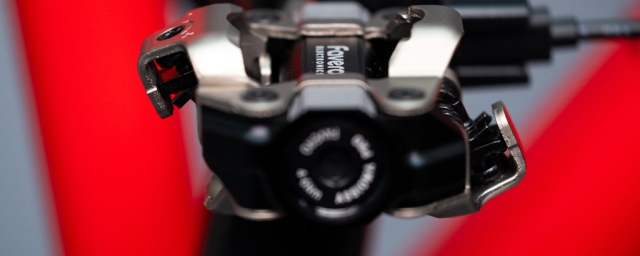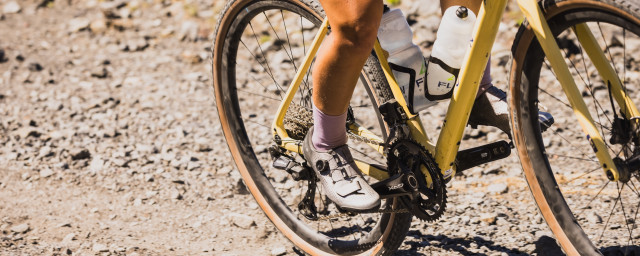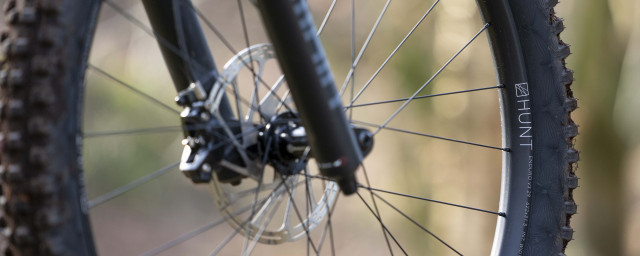The Topeak Pocketshock Digital is the brand's top-end shock pump. As its name suggests, this pump comes with a clear digital display, and it's built to the usual high quality that Topeak is known for. While reasonably efficient and pleasant to use, the Pressure-Rite connector doesn't work as expected, and it's a rather pricy option.
- The best floor pumps for mountain and gravel bikes
- Check out the Fumpa pump review
- The best mini pumps for mountain and gravel bikes
The Pocketshock Digital comes with all of the features you would expect from a good shock pump, and it’s as easy to use as any other. First off, a quick press of the rubber button on the front not only turns the display on but also scrolls through PSI, BAR or KG/CM2. For this test, the pump stayed in its PSI read-out.
The tech itself is simple but rather clever. Topeak's Pressure-Rite valve attaches the pump to your air suspension's Schrader valve. It uses two turning parts, the main body that threads onto a valve and a second part that depresses the valve's switch, activating the pump's read-out and allowing air to flow through.
The idea behind it is that you'll unwind the secondary dial before detaching the pump from the valve so that you won't lose any air when removing the pump. It's a solid idea in theory, but unfortunately, it just didn't work in practice.
The secondary dial doesn't unscrew enough to disengage with the valve, so air leaks when removing the pump. Even with the connector screwed on just to the point where it creates a seal with the valve, it wouldn't disengage, allowing for some leakage.
At lower pressures, it would let out around 1.5 to 2psi, and at higher pressures, it could be as much as 8-10psi. As it reliably lets out that much pressure, it's easy to account for, but it's a shame that the Pressure-Rite doesn't work as it should in the first place.
Onto the Pocketshock Digital's display, it's certainly big enough and very easy to read. It's sorted with a battery level indicator too, which is pretty small on the screen, but it's handy info nonetheless. Having used the pump to set up a number of test bike's suspension in its test period, the battery level is still showing as full, so there are no qualms with its battery usage.
Back to the display, at pressures under 100psi, it’ll read in .5psi increments, whereas above 100, it’ll read in full 1psi steps.
However, it’s not the most efficient pump in the world. It took 180 strokes to reach 90psi, though this inefficiency can be seen as a bit of a benefit. That’s because it allows you to be more precise with the pressure input and makes the most of the .5psi increments in the first 100psi.
It would be disappointing for a pump of this price if it didn't come with an air release button, but that's no problem for the Pocketshock. The button is located at the top left of the display, and it's a bit finicky. It's not a case of pressing the button, and air comes out. Instead, you need to push it to a particular depth as it won't release air when pressed all the way. It's in a pretty bad place, too, as it's easily pressed while pumping.
The shock pump is built very nicely, though. The main body is aluminium with a dual-density polymer handle and a hard plastic display. What's also a very cool touch is that the stanchion has a Kashima-esque coating, giving the pump a super slick look.
So it's got the build to justify its price tag. However, compared to a traditional, mechanically dialled pump like the SKS SAM at £47, which doesn't have any of the issues of the Pocketshock Digital, it doesn't seem as good a deal. This can be said for other digital models too. The LifeLine Digital Shock Pump is priced at £35, which is a huge £40 cheaper than what we have on test here.
If you like your shock pumps built well, pretty, and with easy-to-read screens, the Topeak Pocketshock Digital firmly ticks those boxes. However, the iffy Pressure-Rite connector, the knock-prone bleed button, and the price are pretty big turn-offs.
















Add comment